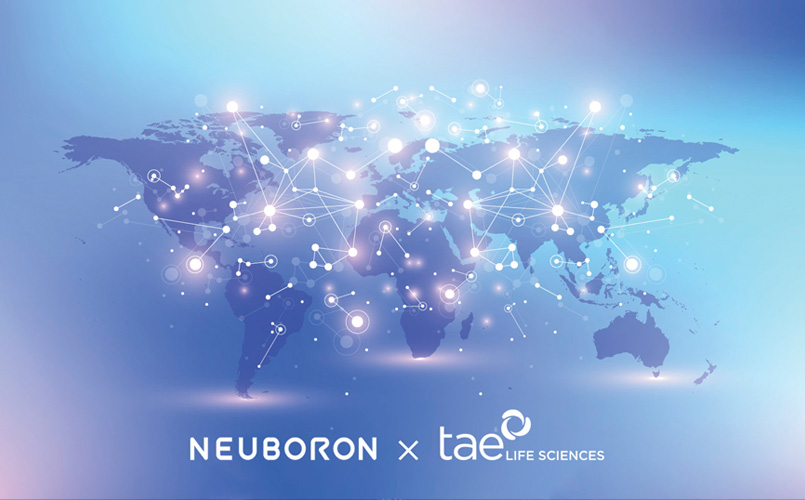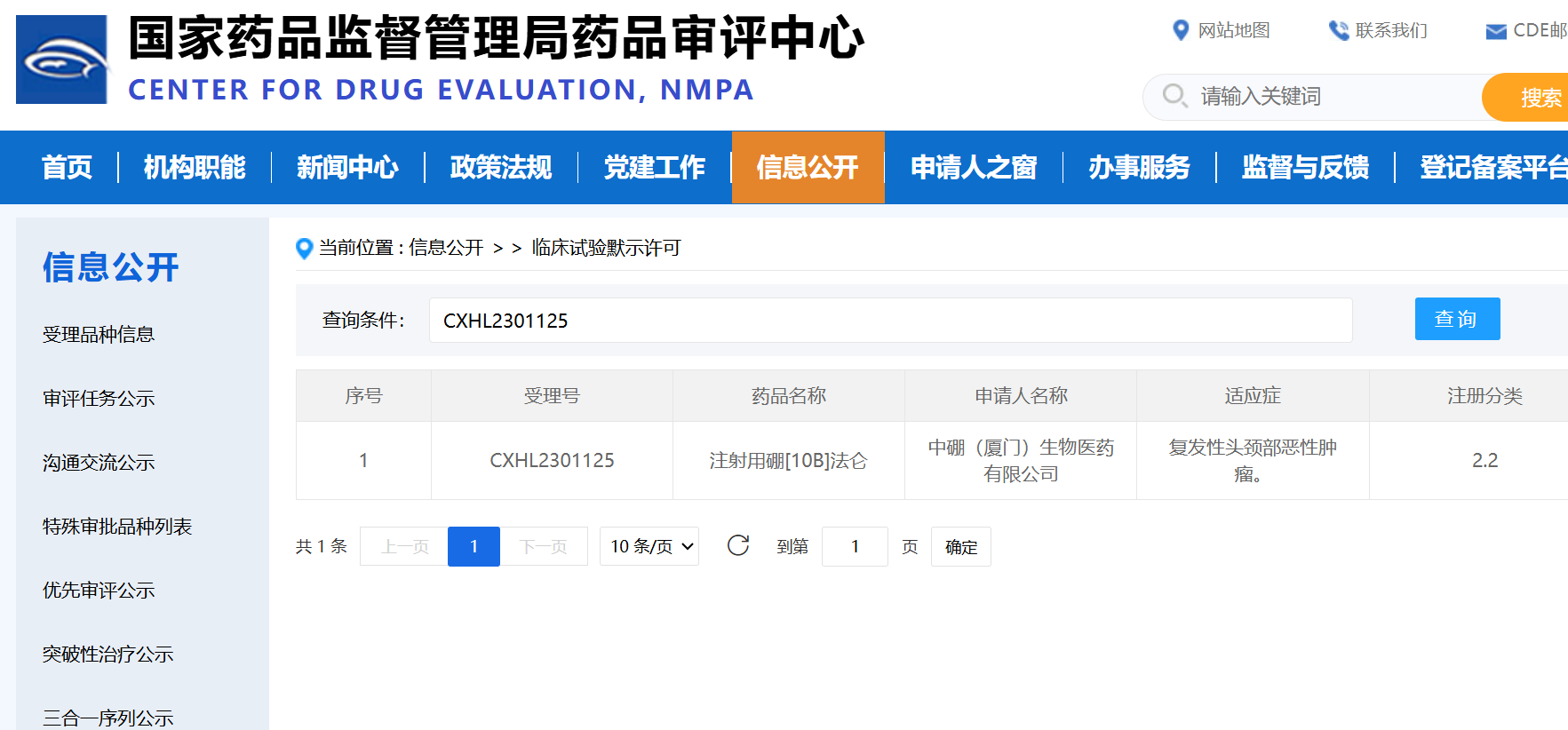Prof. Liu Yuan-Hao, the CEO and Chief Scientist Officer of Neuboron Medtech has recently joined an interview initiated by the International Society for Neutron Capture Therapy (ISNCT), and exclusively shared the construction and commissioning process and their future outlook for China’s first-ever Accelerator-based BNCT Center by delivering and contributing Chinese voice to the world and demonstrating the power of innovation in China.
ISNCT: Welcome to the ISNCT interview. We are here with Prof. Yuan-Hao Liu today. Prof. Liu, what is your story in BNCT and how did you describe your work?
Prof. Liu: Thanks for having me today. I am honored to join this interview and I hope that it is going to be an intriguing and productive discussion. Back to your question, I was managing to carry out BNCT research as I was still a junior undergraduate student by scanning the ionization chamber to obtain the dose distribution of the BNCT beam at our nuclear physics laboratory.
ISNCT: What is the current stage of BNCT development in China?
Prof. Liu: The progress of BNCT is doing quite well in China in recent years, and you can tell that it is getting booming and promising. Back in 2017, we only have a miniature reactor with 30 KW power, built outskirts of Beijing and initiated 4 cases of basic clinical research that set a good example for our BNCT development and was a pioneer in China.
However, since 2019 we have had two AB-BNCT facilities running in China, including the one built in Dongguan by the Institute of High Energy Physics, CAS. The other one is the BNCT center built in Xiamen Humanity Hospital in Xiamen city. Currently, the beam is under commissioning and carried out the irradiation of hundreds of animals. This will become available for human study later this year.
On top of that, there will be two facilities coming at Dongguan People’s Hospital and Mazu Hospital in Guangdong and Fujian provinces, respectively. If all goes well, there will be four facilities running and there will be more to come afterward in Shanghai, Guangzhou, Nanjing, etc., and we are expected to have 10 or more facilities to be staged in the next 5 or 6 years in China.
Besides the hardware, how about drugs? My colleagues made a list about boron drug development in China it turned out that we have more than 1,000 new compounds are developing currently in the Chinese research society. And we now have been notified that our national key project has been approved by the Ministry of Science and Technology of China. And we are actively in collaboration to develop new generation gadolinium-based NCT drugs (Gd-NCT), so we can leverage MRI to determine the uptake of gadolinium drugs in tumors which is an explicit alternative for PET-CT as gadolinium enhancement increases the sensitivity in MRI without receiving any additional irradiation.
ISNCT: Since you have been in charge of the development of the Xiamen facility. Could you tell us how much work is needed to create such a facility?
Prof. Liu: This was hard for me because we certainly put in a lot of hard work in our early times, but we also need some fortune. Given that not anyone knows about BNCT very well, so the first thing is to convince people to believe in BNCT by the time you encountered some misunderstanding from medical society. And it took us quite a while in the first place to describe what it is all about to physicians and clinicians as an on-the-horizon radiotherapy technology.
Given this situation, people stayed in the age of reactor-based neutron sources and have no idea about the current development. To wipe out their concerns, we have spent a lot of time introducing technological advancements in the BNCT space and have to implement market nurturing and education so as to increase the awareness of BNCT in China.
At the same time, all we need is to assess the rules of radiation protection and environmental protection before the project is launched. For the general audience, they often raised their concerns when you talk about neutrons. Accordingly, when you speak to the authorities about radiotherapy, the first thing that comes to their mind was photon therapy, such as electron-rays, X-rays, and gamma rays. In recent years, people get to know more about protons and heavy ions with the growth of particle therapy, however, they have yet to garner more solid understanding and recognition in neutron radiotherapy technologies.
During the construction of the facility, we had to set the bar high for seeking explicit experts who can provide special heavy concrete solutions for this small facility amid the construction. It is not like what we have normally done in the laboratory, instead, we have to work closely with the hospital, in terms of building the whole facility - i.e. the entire hardware, accelerator and then commissioning, etc. I do believe that this part is easy to understand for you folks.
In addition to the necessary beam testing, we also conducted a preclinical animal neutron irradiation study to evaluate its safety when we reached the period where the facility gets to the commissioning stage. At the same time, the autoradiography equipment is also planned in the center except for another set of ICP-MS laboratory to build boron concentration measurement technology.
To bring this facility into a reality, we view this as quite a huge and complex project for putting together a BNCT Center. Amid the construction, it involves hundreds of experts, technicians, workers, and the management in the process which can be regarded as systematical work.
ISNCT: That was impressive. What a remarkable work in these unprecedented times and especially amid the global pandemic. Could you tell us where are we at this juncture and what are our plans?
Prof. Liu: We have actively been implementing the animal experiments as well as measurements for the beam since we launched our first beam in August last year in Xiamen Center. It is expected that our facility can be debugged to meet the regular criteria in full power and stable operation later this year. At the same time, we will apply for an investigator-initiated clinical trial (IIT) at the Xiamen Humanity Hospital. We hope to start off with our first human study probably in October or November. For the first stage, we expected to carry out about 10 patients by the end of this year. And then next in the summer of 2023, we hope to register and apply for official human clinical trials in wake of accumulating some experience and confidence and along with our protocol modified based on our preliminary human clinical study to proceed with the work promptly.
ISNCT: How important it is to have a good collaboration and international partnership to improve the BNCT world, and also to be able to create a facility such as the one you were talking about?
Prof. Liu: Apparently, international cooperation is of great significance for the development of BNCT. As mentioned earlier, BNCT is a state-of-the-art technology that integrates multi-disciplinary fields. The translation of this advanced technology from the bench to the actual bedside is faced with multiple and complex problems. It requires people from multi-disciplinary teams (MDT) to carry out joint research, and it can barely be for an organization to master all the technology. For example, the group of Pavia at INFN (The National Institute of Nuclear Physics) is doing the SPECT for the real-time boron measurement, instead, my group (Neuboron) excels at facility design, beam control system, and our portfolio planning, etc. that we can share with other facilities. We also have cooperated with the group at Budker Institute of Nuclear Physics (BINP) in Russia by leveraging their merits in target design to jointly generate neutrons.
In addition, we need international collaboration to learn the biological effects of different doses of neutron spectrum from different facilities to improve neutron radiobiology research, which hardly can be done in one single facility. Furthermore, facilitating mutual exchanges and collaborating with international peers allows us to advance the clinical trials process, in other words, a certain number of subjects are generally required to participate to meet the scientific criteria, and thus multi-center trials are essential for us to accumulate relevant clinical cases as much as we can due to a limited number of subjects a group can often collect.
In general, Neuboron being a firm advocator and supporter of BNCT international society will continue to promote innovative BNCT cooperation and clinical studies in the future.
ISNCT: What else have you done to promote your work and what message would you like to convey to the public?
Prof. Liu: In China, we are committed to introducing BNCT in the most straightforward and easy-understanding terms. For example, we have made active contributions on social media by delivering the know-how, principal indications, instructions, workflow, treatment advantages as well as the latest research from different journals to the related audience on the demand. We also have abstracts online available for researchers and have published some articles that answer the concerns of patients.
From a global perspective, I can see the newsletter that the ISNCT monthly produces are very useful for our society but are not available for our external audience out of it. Hence, creating a certain channel to make these materials available for patients (and their families) and the general medical groups would be crucial for promoting BNCT to the public. In my opinion, the society of ISNCT can help promote BNCT to the medical groups by engaging in ASCO, ASTRO, and AAPM activities regarding these general oncology congresses as much as possible to organize workshops to deliver lectures in a live-streaming way. As one society in that way, there will be much more easier for our medical groups to be able to engage with their patients when it comes to garnering acknowledgment and recognition from these end-users.



